
How to Use Teensy 4.0: Examples, Pinouts, and Specs
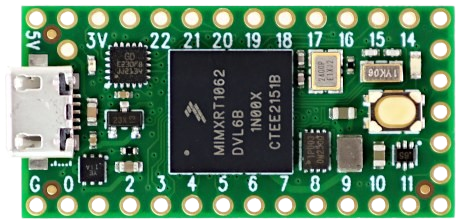
 Design with Teensy 4.0 in Cirkit Designer
Design with Teensy 4.0 in Cirkit DesignerIntroduction
The Teensy 4.0 is a high-performance microcontroller board designed by PJRC and powered by the NXP i.MX RT1062 chip. It features a 600 MHz ARM Cortex-M7 processor, 1 MB of RAM, and 2 MB of flash memory, making it one of the fastest and most capable microcontroller boards available. Its compact size and extensive I/O capabilities make it ideal for demanding applications such as audio processing, robotics, real-time data acquisition, and advanced control systems.
Explore Projects Built with Teensy 4.0
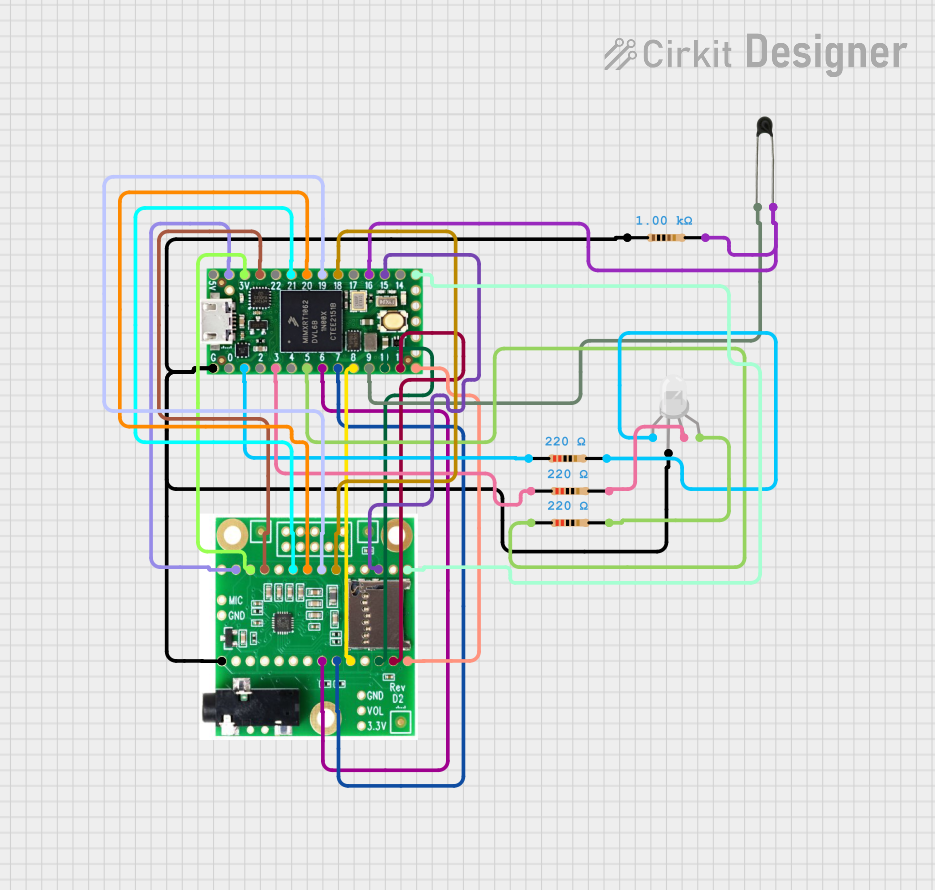
 Open Project in Cirkit Designer
Open Project in Cirkit Designer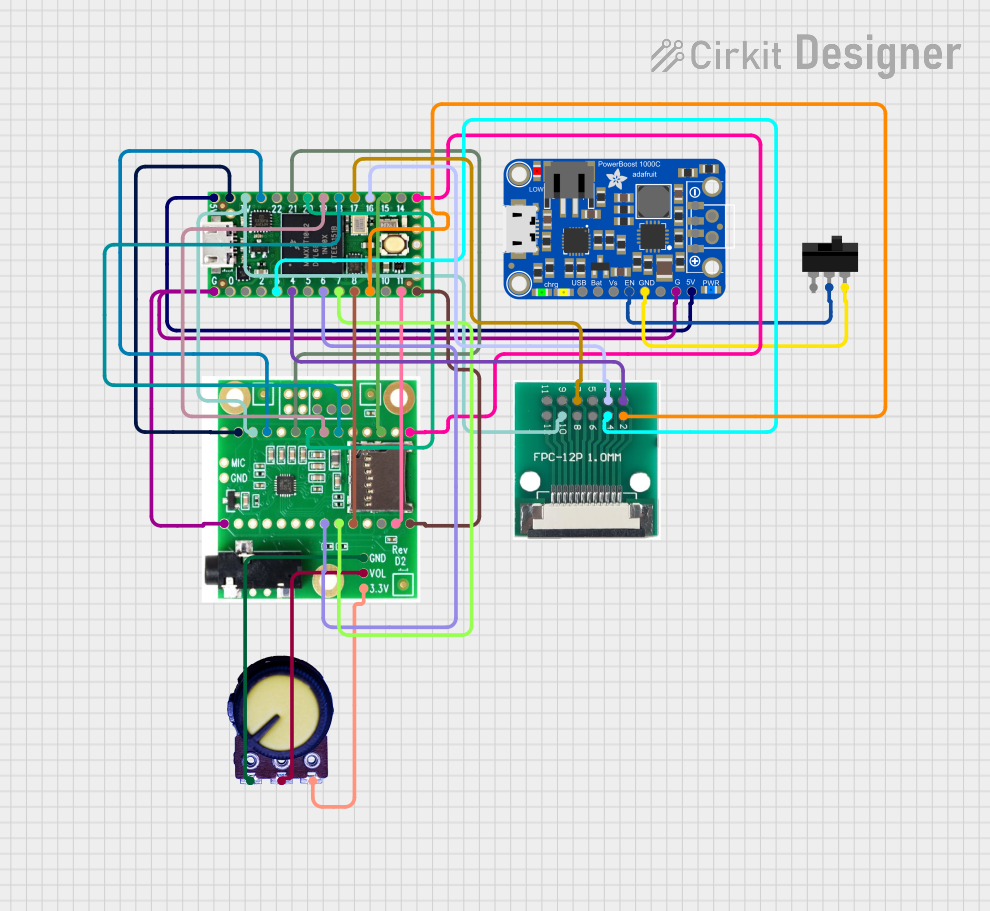
 Open Project in Cirkit Designer
Open Project in Cirkit Designer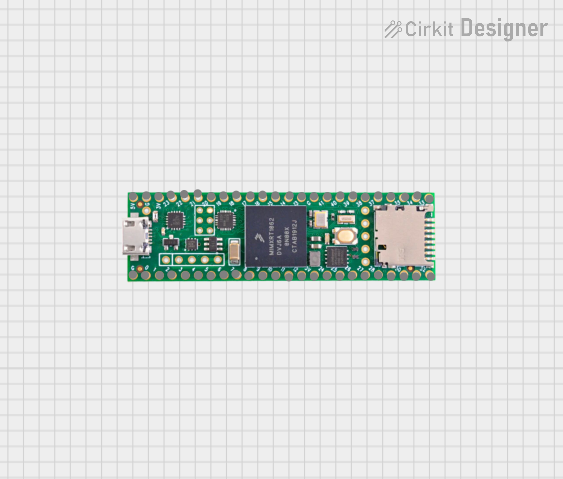
 Open Project in Cirkit Designer
Open Project in Cirkit Designer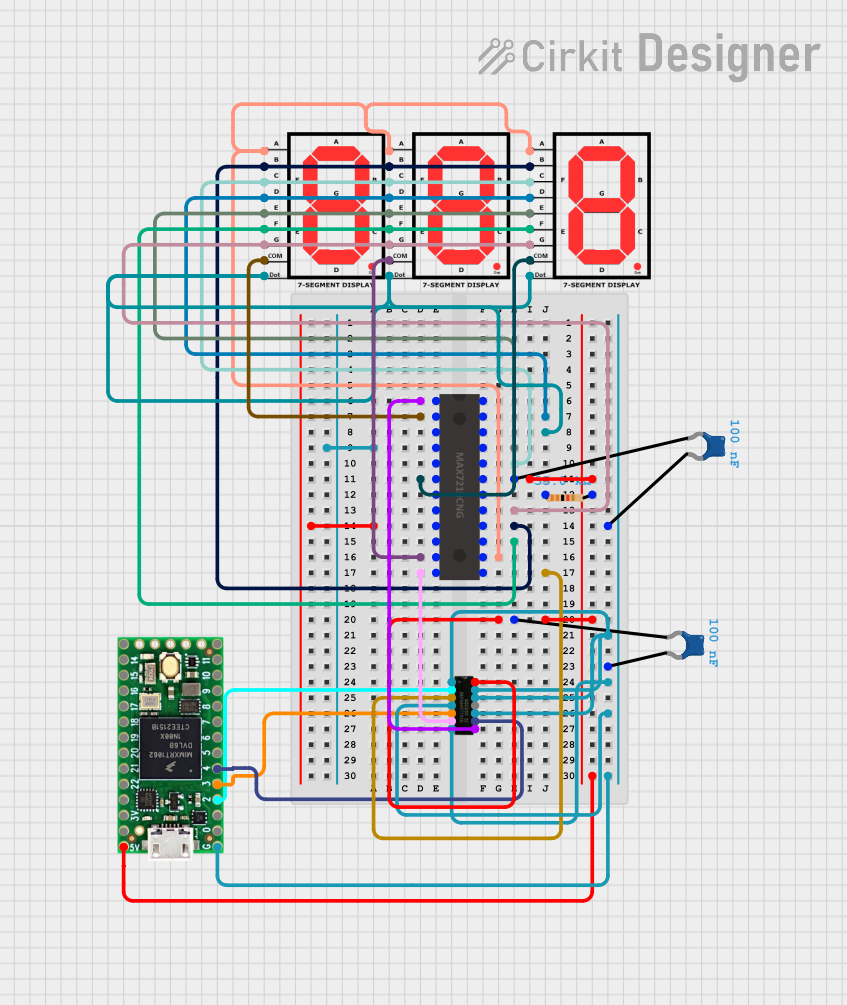
 Open Project in Cirkit Designer
Open Project in Cirkit DesignerExplore Projects Built with Teensy 4.0

 Open Project in Cirkit Designer
Open Project in Cirkit Designer
 Open Project in Cirkit Designer
Open Project in Cirkit Designer
 Open Project in Cirkit Designer
Open Project in Cirkit Designer
 Open Project in Cirkit Designer
Open Project in Cirkit DesignerCommon Applications and Use Cases
- High-speed data processing and logging
- Audio synthesis and digital signal processing (DSP)
- Robotics and motor control
- IoT devices and smart systems
- Advanced prototyping and research projects
- Real-time control systems
Technical Specifications
The Teensy 4.0 is packed with features that make it suitable for a wide range of applications. Below are its key technical specifications:
Key Technical Details
- Processor: 600 MHz ARM Cortex-M7
- RAM: 1 MB (tightly coupled memory for high-speed access)
- Flash Memory: 2 MB
- Operating Voltage: 3.3V (I/O pins are not 5V tolerant)
- USB Interface: USB 2.0 (480 Mbps)
- Digital I/O Pins: 40 (with 31 supporting PWM)
- Analog Input Pins: 14 (12-bit ADC resolution)
- Communication Protocols: UART, SPI, I2C, CAN, I2S
- Dimensions: 1.4 x 0.7 inches (35.56 x 17.78 mm)
Pin Configuration and Descriptions
The Teensy 4.0 has a total of 48 pins, including power, digital, analog, and communication pins. Below is a summary of the pin configuration:
| Pin | Type | Description |
|---|---|---|
| VIN | Power Input | Input voltage (5V) for powering the board. |
| 3.3V | Power Output | Regulated 3.3V output for external components. |
| GND | Ground | Ground connection. |
| A0-A13 | Analog Input | 14 analog input pins with 12-bit resolution. |
| D0-D39 | Digital I/O | 40 digital pins, 31 of which support PWM. |
| TX1/RX1 | UART | Serial communication pins (UART1). |
| SCL/SDA | I2C | I2C communication pins. |
| SCK/MOSI/MISO | SPI | SPI communication pins for high-speed data transfer. |
| CANRX/CANTX | CAN Bus | Controller Area Network (CAN) communication pins. |
| USB | USB Interface | USB 2.0 interface for programming and communication. |
| RESET | Reset | Resets the microcontroller. |
Usage Instructions
The Teensy 4.0 is versatile and easy to use in a variety of projects. Below are the steps and best practices for using the board effectively.
How to Use the Teensy 4.0 in a Circuit
Powering the Board:
- The Teensy 4.0 can be powered via the USB port or through the VIN pin (5V input).
- Ensure that the input voltage does not exceed 5.5V to avoid damaging the board.
Programming the Board:
- Install the Arduino IDE and the Teensyduino add-on, which provides support for Teensy boards.
- Connect the Teensy 4.0 to your computer using a micro-USB cable.
- Select "Teensy 4.0" as the board in the Arduino IDE and upload your code.
Connecting Peripherals:
- Use the digital and analog pins to connect sensors, actuators, and other peripherals.
- For communication, use the UART, SPI, I2C, or CAN pins as required by your application.
Using PWM:
- The Teensy 4.0 supports PWM on 31 digital pins, which can be used for motor control, LED dimming, etc.
- Configure the PWM frequency and duty cycle in your code.
Important Considerations and Best Practices
- Voltage Levels: The Teensy 4.0 operates at 3.3V logic levels. Do not connect 5V signals directly to the I/O pins. Use a level shifter if needed.
- Heat Management: The 600 MHz processor can generate heat during intensive tasks. Ensure proper ventilation or consider adding a heatsink for prolonged use.
- Pin Protection: Avoid shorting pins or exceeding the current limits (4 mA per pin for digital I/O).
- Bootloader: The Teensy 4.0 has a built-in bootloader, so no external programmer is required.
Example Code for Arduino IDE
Below is an example of how to blink an LED connected to pin 13 on the Teensy 4.0:
// Blink an LED connected to pin 13 on the Teensy 4.0
// This example demonstrates basic digital output functionality.
void setup() {
pinMode(13, OUTPUT); // Set pin 13 as an output
}
void loop() {
digitalWrite(13, HIGH); // Turn the LED on
delay(500); // Wait for 500 milliseconds
digitalWrite(13, LOW); // Turn the LED off
delay(500); // Wait for 500 milliseconds
}
Troubleshooting and FAQs
Common Issues and Solutions
The board is not recognized by the computer:
- Ensure the USB cable is functional and supports data transfer.
- Check that the Teensyduino add-on is installed correctly.
- Press the reset button on the Teensy 4.0 to enter programming mode.
Code does not upload:
- Verify that "Teensy 4.0" is selected as the board in the Arduino IDE.
- Ensure no other program is using the USB port.
- Try a different USB cable or port.
Peripherals are not working as expected:
- Double-check the wiring and connections.
- Ensure that the voltage and current requirements of the peripherals are within the Teensy 4.0's limits.
- Use pull-up or pull-down resistors for I2C or other communication protocols if needed.
The board overheats:
- Avoid running the processor at maximum speed for extended periods without proper cooling.
- Reduce the clock speed in the Arduino IDE if heat becomes an issue.
FAQs
Can I use 5V sensors with the Teensy 4.0?
No, the Teensy 4.0 operates at 3.3V logic levels. Use a level shifter to interface with 5V sensors.What is the maximum current output of the 3.3V pin?
The 3.3V pin can supply up to 250 mA, depending on the input power source.Can I use the Teensy 4.0 for audio processing?
Yes, the Teensy 4.0 is well-suited for audio applications and supports the Teensy Audio Library for advanced audio synthesis and processing.Is the Teensy 4.0 compatible with Arduino libraries?
Most Arduino libraries are compatible with the Teensy 4.0, but some may require modifications for optimal performance.
By following this documentation, you can effectively utilize the Teensy 4.0 for your high-performance projects.